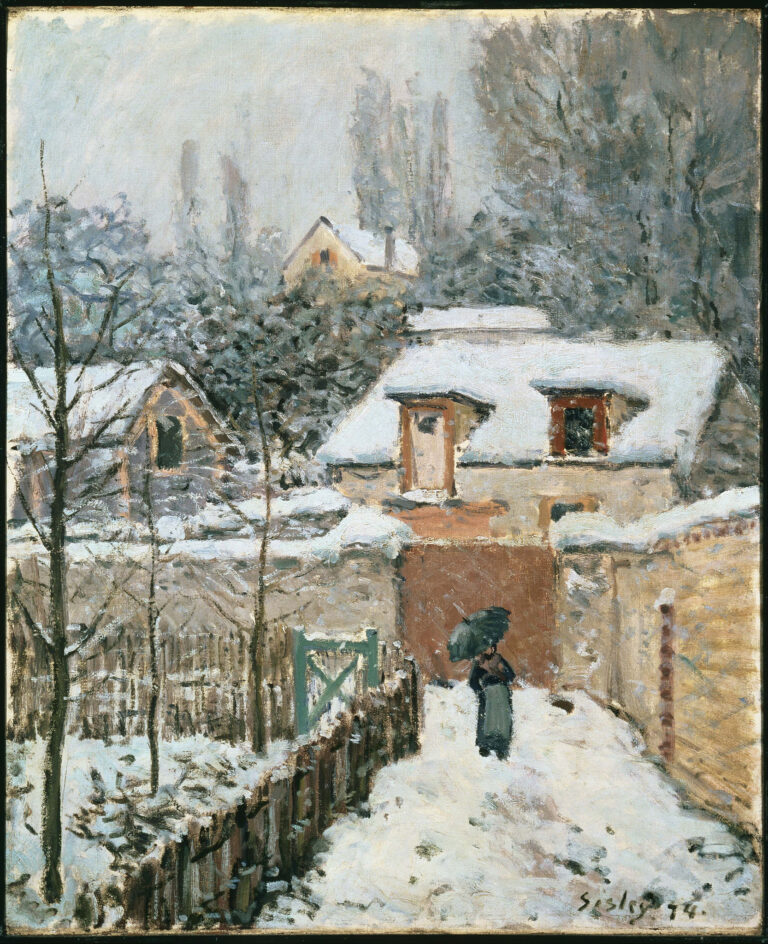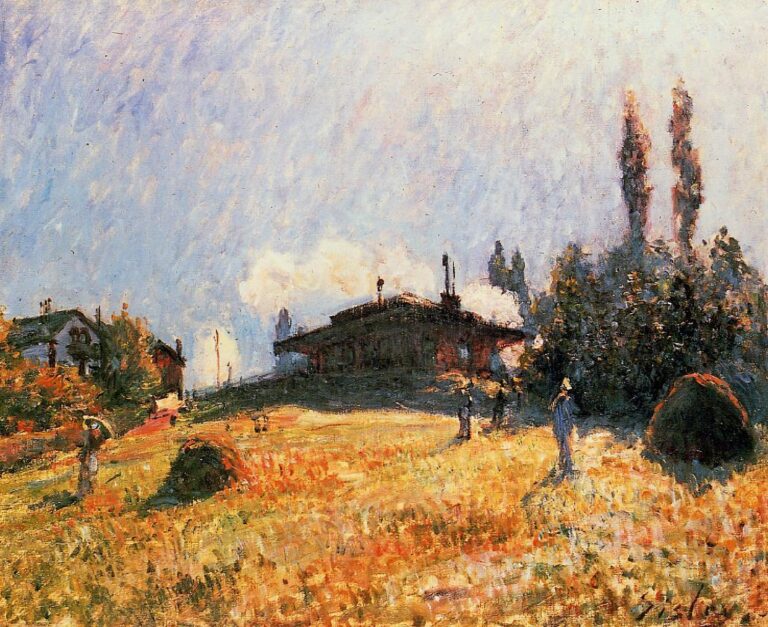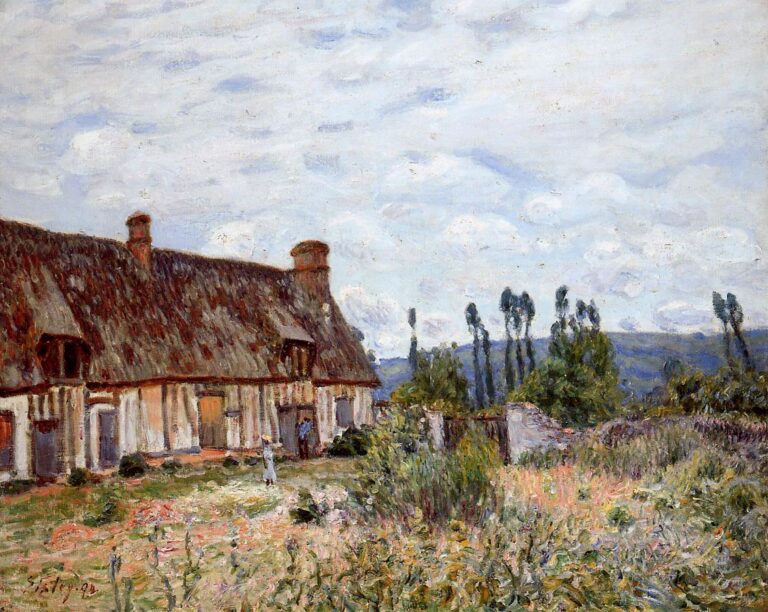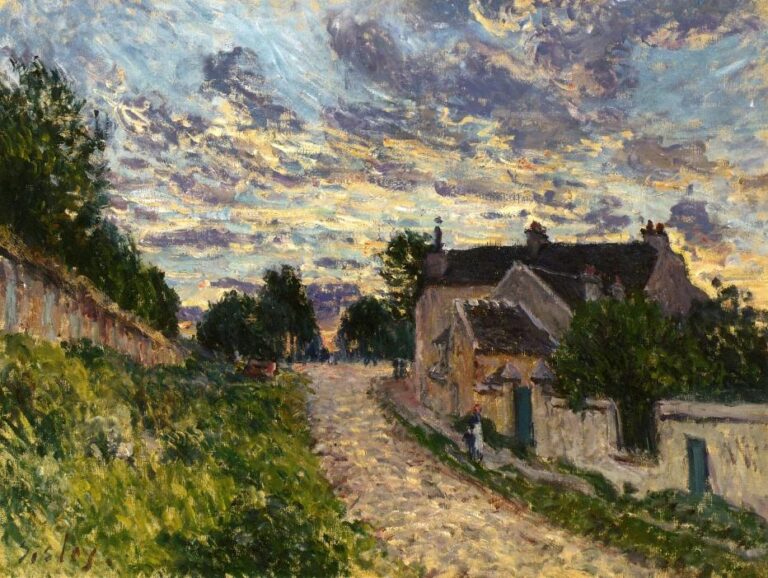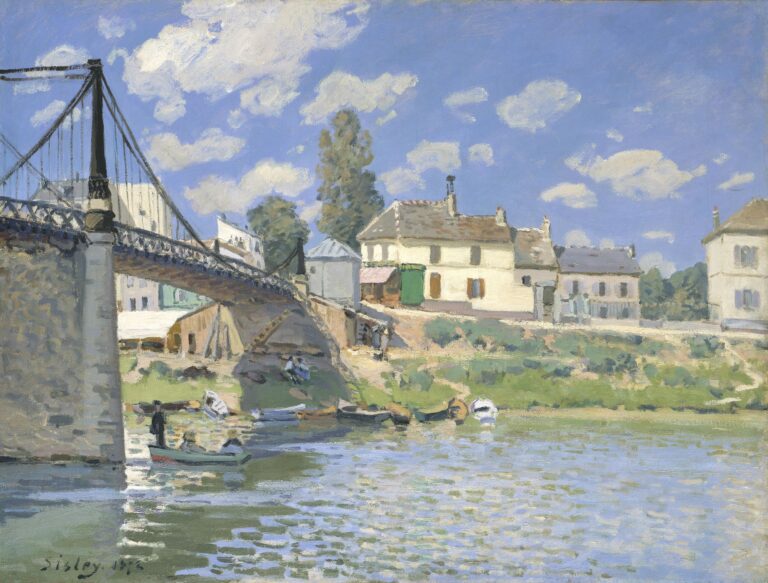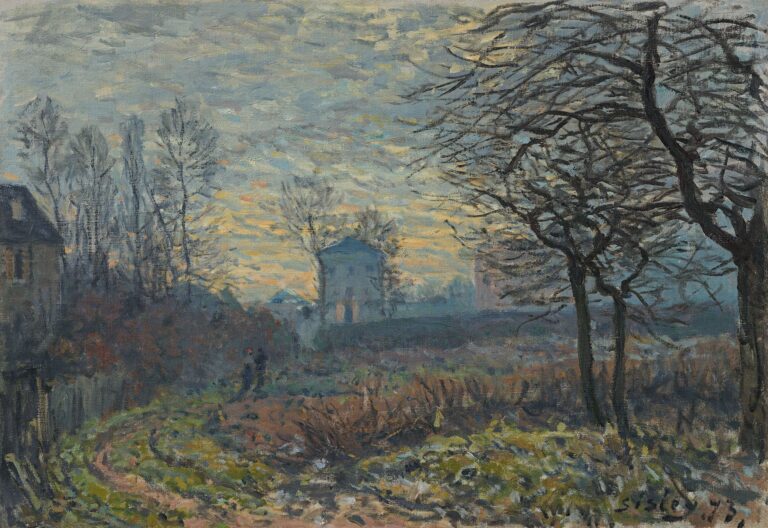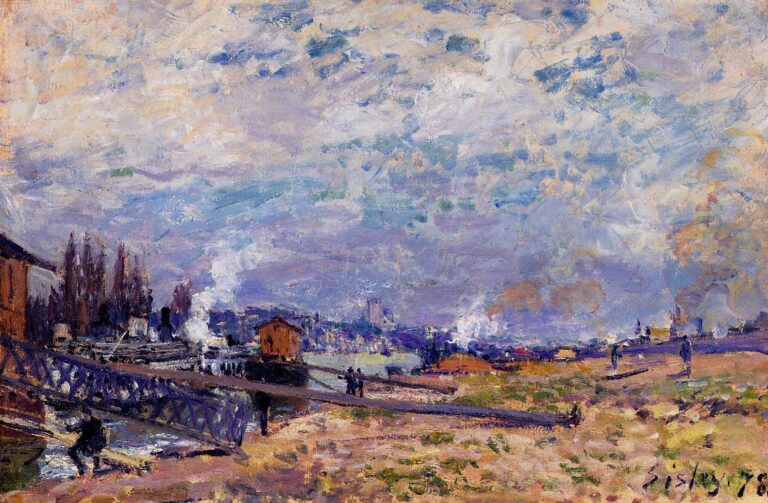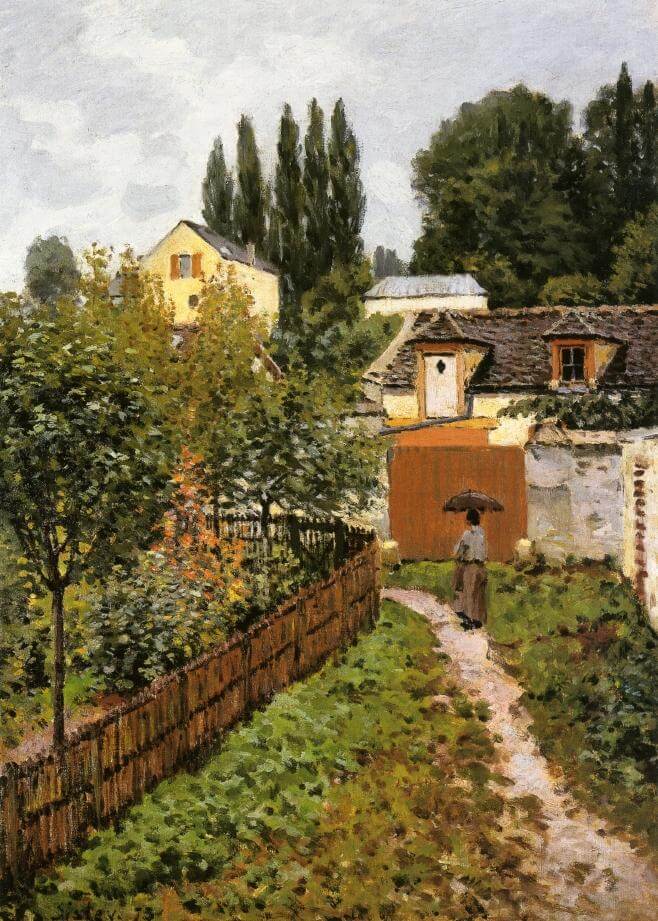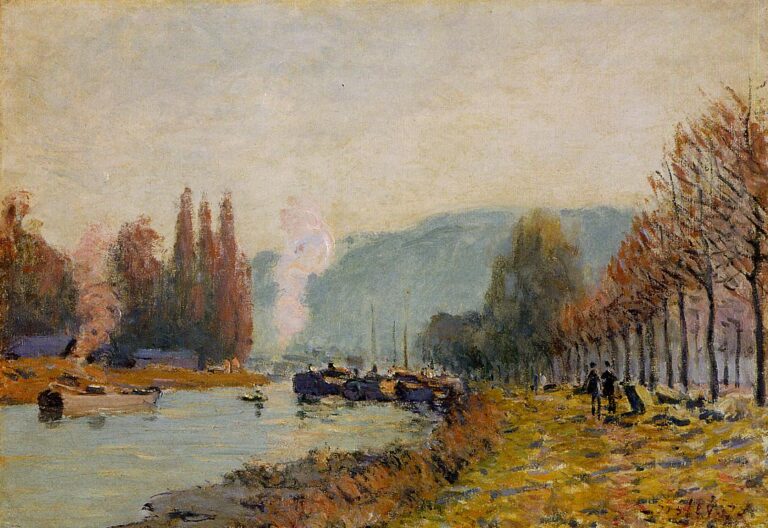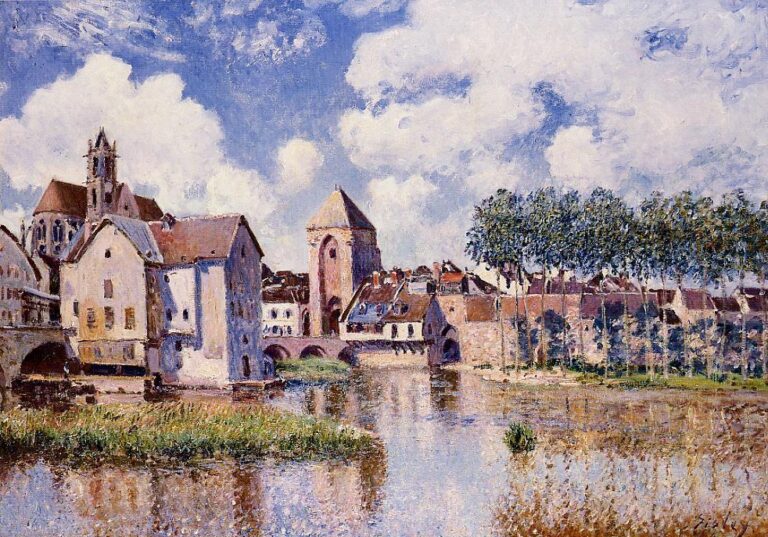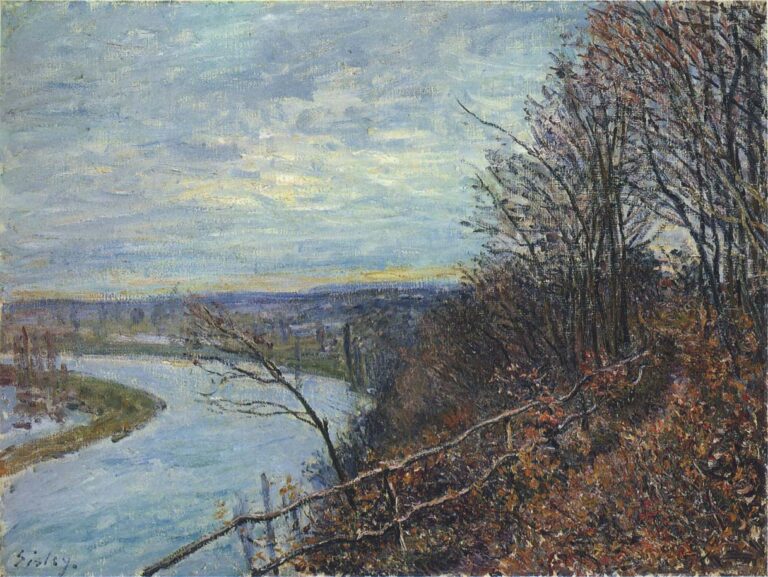Alfred Sisley
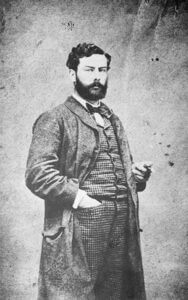
Alfred Sisley (1839-1899) was a prominent English-French Impressionist painter best known for his dedication to painting landscapes, often in their natural settings. Born to affluent British parents in Paris, France, Sisley pursued a career in business initially, as per his parents’ wishes. However, his passion for the arts led him to enroll at the Ecole des Beaux-Arts in 1862, where he began formal training.
While studying at Marc-Charles-Gabriel Gleyre’s studio, Sisley met fellow artists Claude Monet, Pierre-Auguste Renoir, and Frédéric Bazille, who would become key figures in the Impressionist movement. Sisley was deeply influenced by these colleagues and their shared desire to capture the transient effects of light and color in the open air, away from the academic art tradition.
Sisley’s work primarily focused on the landscapes around Paris, the Seine Valley, and the coast of Normandy. His paintings are celebrated for their delicate handling of color and light, as well as their evocative portrayal of changing seasons and weather conditions. Despite painting some urban scenes, Sisley had a particular affection for the countryside, which formed the primary subject of his work.
Despite his significant contributions to Impressionism, Sisley struggled financially throughout his life. His works did not gain substantial recognition or value until after his death in 1899. However, in the years since, Alfred Sisley’s contributions to the Impressionist movement have been widely recognized, and his works are held in high esteem, residing in many of the world’s most prestigious art museums.
Sisley’s unwavering devotion to landscape painting, his innovative use of color and light, and his ability to capture the ephemeral quality of nature have solidified his legacy as a pivotal figure in the Impressionist movement. His work continues to be appreciated for its subtlety, tranquility, and richly detailed portrayal of the natural world.
- 1
- 2

